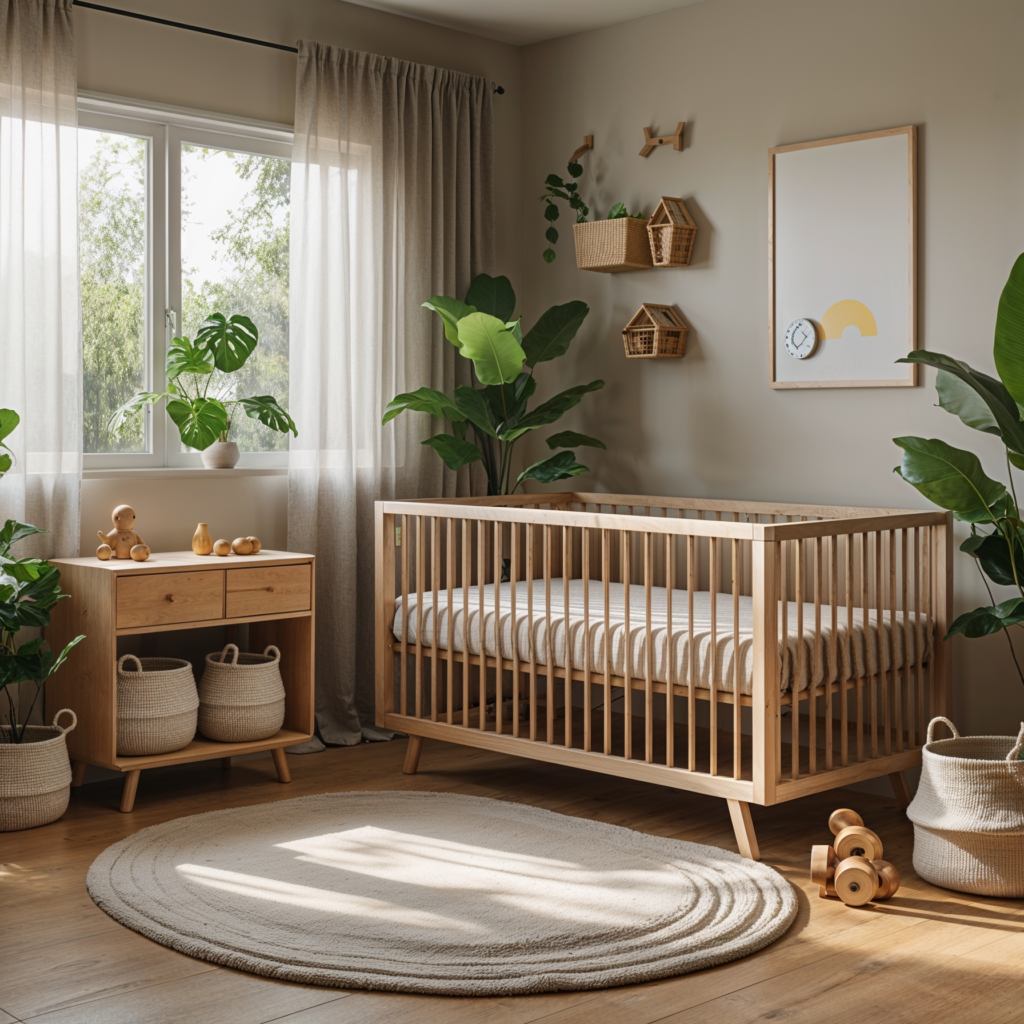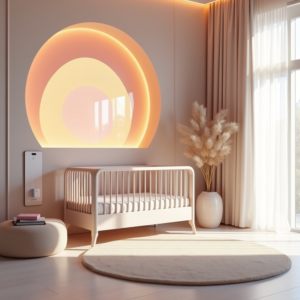Sustainable Baby Room: How to Design an Eco-Friendly Nursery
Creating a sustainable baby room is one of the best ways to prioritize your baby’s health and the environment. Many conventional nursery products contain harmful chemicals, synthetic materials, and excess waste, which can affect indoor air quality and long-term sustainability.
By choosing eco-friendly furniture, organic bedding, and non-toxic materials, you can design a safe, stylish, and environmentally responsible nursery that supports your baby’s well-being and reduces environmental impact.
Why Choose a Sustainable Baby Room?
✅ Non-Toxic & Chemical-Free – Avoids VOCs, formaldehyde, and synthetic flame retardants.
✅ Healthier Indoor Air Quality – Reduces off-gassing from plastics and synthetic fibers.
✅ Eco-Friendly & Renewable Materials – Supports sustainable forestry and organic farming.
✅ Durable & Long-Lasting – Quality furniture & textiles last beyond the baby years.
Key Elements of a Sustainable Baby Room
1. Choose Eco-Friendly Nursery Furniture
Opt for furniture made from FSC-certified solid wood instead of MDF or particleboard, which often contains toxic glues and formaldehyde.
🌿 Best Sustainable Furniture Choices:
✔️ Convertible Cribs – Grows with your child (Oeuf, Babyletto, Nestig).
✔️ Solid Wood Dressers – Long-lasting & free of VOCs (Green Cradle, Kalon Studios).
✔️ Reclaimed Wood Bookshelves – Reduces waste & adds a natural aesthetic.

2. Opt for Organic Bedding & Textiles
Since babies spend 14–17 hours a day sleeping, organic fabrics are a must. Look for:
🛏️ GOTS-certified organic cotton crib sheets – Free from pesticides and chemical dyes.
🛏️ Natural wool or organic cotton blankets – Hypoallergenic & flame-resistant.
🛏️ Organic latex or coconut fiber crib mattresses – Breathable & chemical-free.
🌱 Best Brands: Naturepedic, Coyuchi, Burt’s Bees Baby
3. Use VOC-Free Paint & Non-Toxic Finishes
Conventional paints contain volatile organic compounds (VOCs) that can release toxic fumes for months. Instead, choose:
🎨 VOC-Free & Natural Paints – ECOS Paints, Clare Paint, Lullaby Paints.
🎨 Plant-Based Wood Finishes – Rubio Monocoat for cribs & dressers.
🚨 Tip: Paint the nursery at least 4 weeks before baby arrives for maximum air circulation.
4. Select Sustainable Flooring & Rugs
Avoid vinyl flooring or synthetic carpets, which contain PVCs and phthalates. Instead, choose:
✔️ Bamboo Flooring – Durable, antibacterial, and sustainably harvested.
✔️ Wool or Jute Rugs – Naturally flame-resistant & biodegradable.
✔️ Cork Flooring – Soft, eco-friendly, and provides natural cushioning.
🌱 Best Brands: Lorena Canals, Earth Weave, FLOR
5. Incorporate Baby-Safe Plants
Indoor plants improve air quality by absorbing toxins and increasing oxygen. Some safe options:
🌱 Areca Palm – Acts as a natural humidifier.
🌱 Boston Fern – Removes toxins from the air.
🌱 Calathea (Prayer Plant) – Purifies air & thrives in low light.
🚨 Avoid: Pothos, Peace Lily, and Aloe Vera (toxic to babies & pets).
How to Reduce Waste in Your Baby Room
♻️ Buy Multi-Functional Pieces – Choose cribs that convert into toddler beds.
♻️ Repurpose & Buy Secondhand – Vintage dressers and bookshelves reduce landfill waste.
♻️ Use Cloth Instead of Disposable – Cloth diapers, reusable wipes, and organic fabric storage bins.
♻️ Choose Plastic-Free Toys – Opt for wooden or natural rubber over plastic.
Final Thoughts
A sustainable baby room creates a calm, healthy, and eco-conscious space where your child can thrive. By selecting non-toxic materials, organic textiles, and responsibly sourced furniture, you’re not only protecting your baby’s health but also making an impact on the environment.
Would you design a sustainable nursery? Share your thoughts below!





